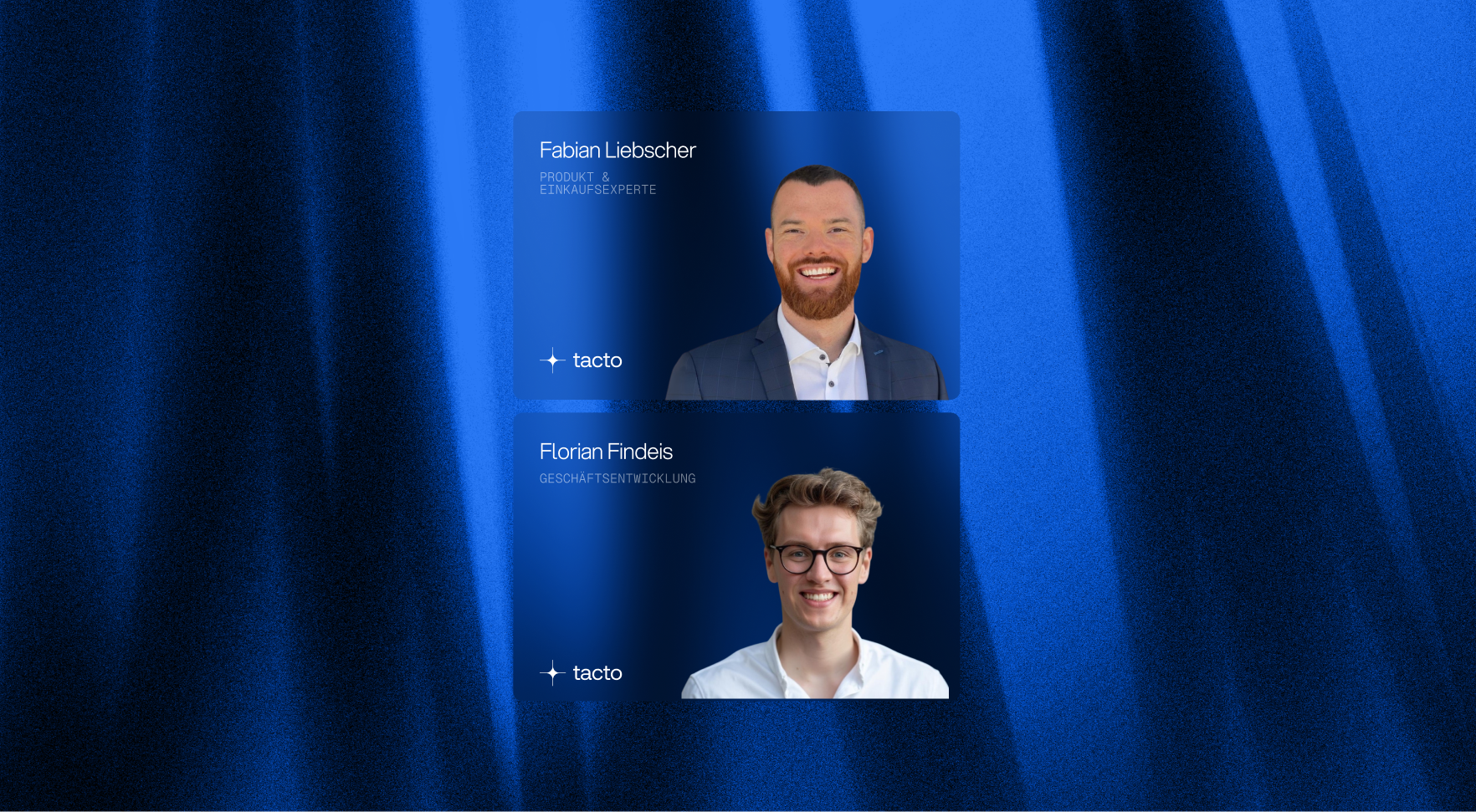Online Webinars
Webinar recording: Practical examples of hidden savings potential in ERP data - from analysis to savings

Cost increases, volatile markets and new regulatory requirements are increasing the pressure on purchasing organizations. At the same time, many potential savings remain untapped - not because they don't exist, but because they remain hidden in ERP data. In the webinar "Practical examples of hidden savings potential in ERP data - from analysis to savings", Florian Liebscher and Florian Findeis (Tacto) show how AI-supported analyses create transparency, make anomalies visible and result in concrete options for action. Based on real customer projects, they will show how measurable savings can be derived from everyday orders and Categories - from long-term quantity contracts and supplier consolidations to intra-group analysis.
Recognize and exploit hidden savings potential in ERP data
ERP systems contain a wealth of information on prices, quantities, suppliers and processes. In practice, however, many opportunities remain untapped because the data is not analyzed in a structured way. In the webinar "Practical examples of hidden savings potential in ERP data - from analysis to savings", Florian Liebscher and Florian Findeis (Tacto) explained how AI-supported analyses create transparency and make savings potential visible.
Initial situation - Why so many opportunities remain untapped
- ERP systems store enormous amounts of data on prices, quantities, suppliers and processes.
- Without specialized analysis, anomalies and patterns remain hidden.
- Price discrepancies, duplicate orders or inefficient supplier structures are often not recognized as a result - potential savings remain untapped.
Especially in the market environment of 2025, characterized by rising costs and regulatory pressure, this potential is a decisive lever for competitiveness and securing margins.
The approach - from analysis to savings
The key lies in not only collecting ERP data, but also systematically evaluating it. AI-supported analyses transform raw data into a basis for decision-making:
- Automated transparency: Data is processed in a structured and comparable manner.
- Recognize signals: Price differences, alternative suppliers or quantity bundling are immediately apparent.
- Practical analyses: Instead of abstract concepts, customer projects show how potential can be made visible quickly and concretely - from standard articles to more complex Categories.
Practical examples - Tangible effects
- Long-term volume contracts
- Initial situation: Increase in order volume from 1,500 kg to 10,750 kg in three years, accompanied by a price increase of 90 %.
- Analysis: Tacto identified the price increase and recommended long-term volume contracts.
- Result: price reduction of 20 % - realized savings of approx. € 10,952 per year.
- Supplier consolidation
- Initial situation: Articles were procured from four suppliers, with price differences of up to 430%.
- Analysis: Recommendation to bundle procurement with the two most favorable suppliers.
- Result: potential savings of around €12,630 per year (approx. 12% of the total volume).
- Intra-group analysis
- Initial situation: Significant price differences for very similar items within a Category.
- Analysis: Proposal to consolidate to a cheaper provider.
- Result: potential savings of around €8,750 per year (around 15%).
These examples illustrate this: Hidden opportunities often lie in everyday articles or processes - and can be quickly made visible with the right analysis.
Key findings for Procurement
- ERP data harbors more opportunities than is apparent at first glance.
- AI makes complex information transparent and manageable.
- Proof of value approaches show potential quickly and comprehensibly.
- Data-driven transparency forms the basis for strategic and operational improvements.
Conclusion
Many companies are sitting on a treasure trove of data that they have not yet been able to fully utilize. The webinar showed this: AI can be used to reliably reveal hidden potential - and translate it into concrete savings. This turns confusing ERP data into a valuable management tool for Procurement that creates transparency, reduces risks and strengthens competitive advantages.
Florian Liebscher and Florian Findeis (Tacto) will show how purchasing organizations can make hidden potential in their ERP data visible and translate it into concrete savings. Practical examples - from quantity bundling to supplier consolidation - illustrate how AI creates transparency and supports purchasing teams in making informed decisions and securing sustainable cost benefits.

